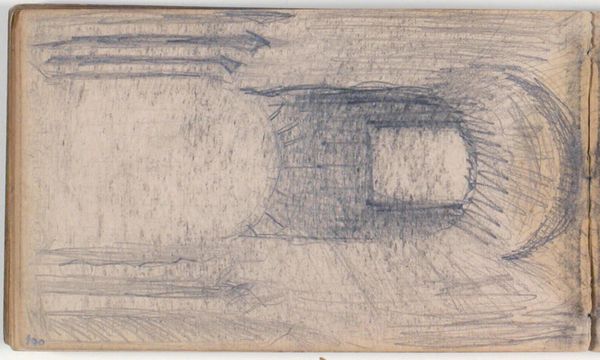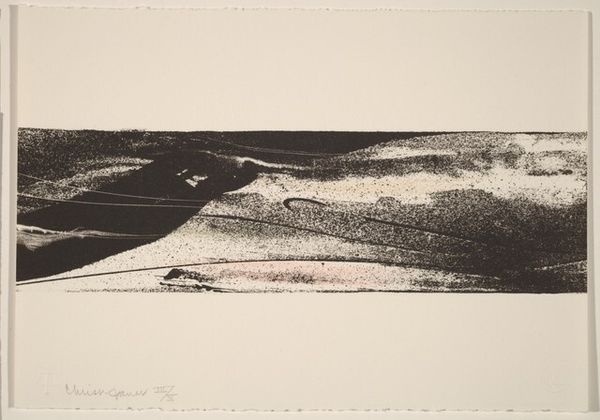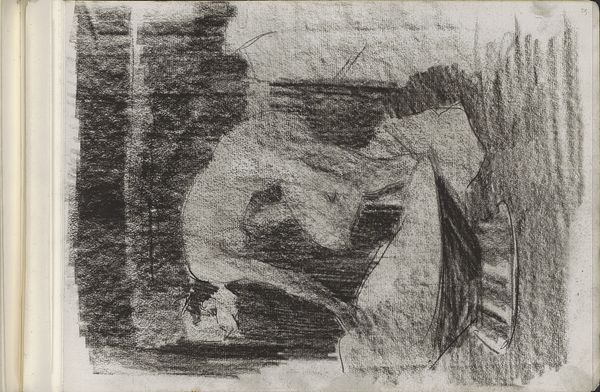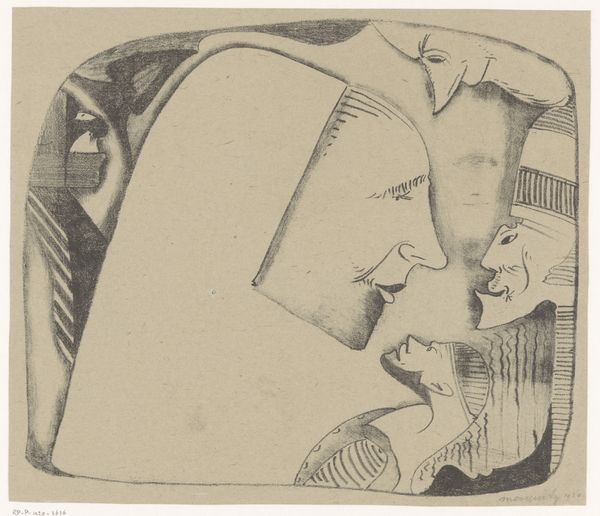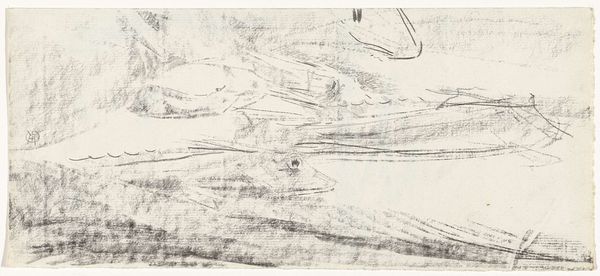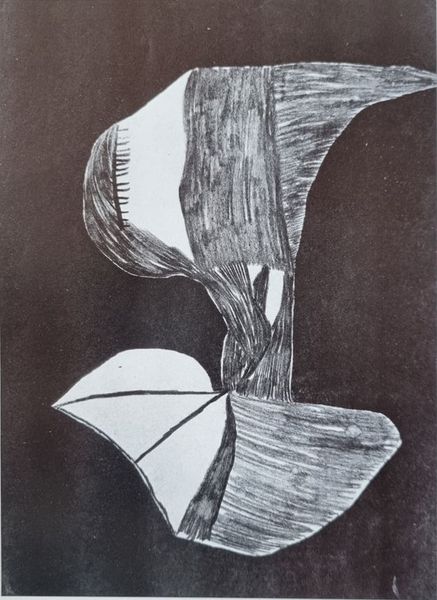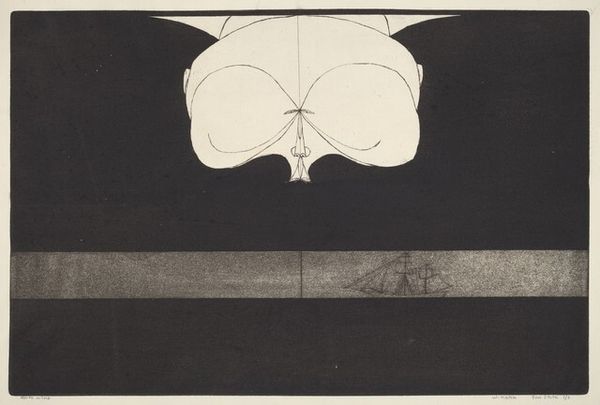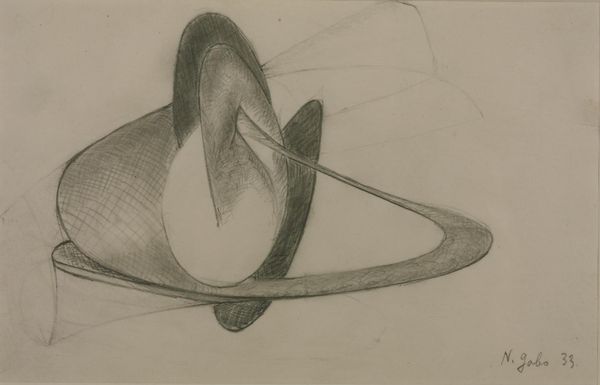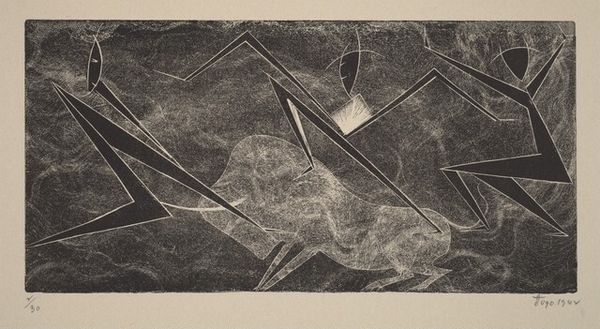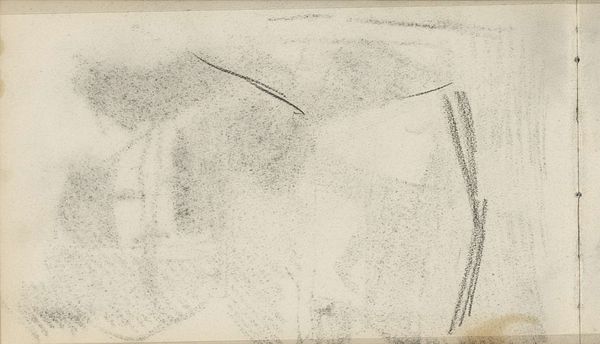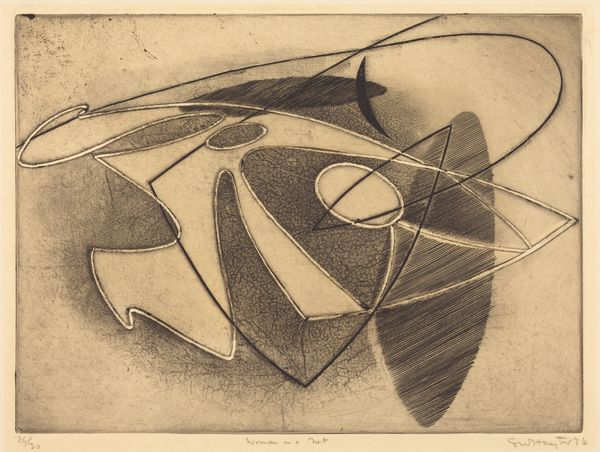
drawing, pencil
#
drawing
#
landscape
#
pencil drawing
#
geometric
#
pencil
#
abstraction
#
line
Dimensions: sheet: 36.2 x 55.9 cm (14 1/4 x 22 in.)
Copyright: National Gallery of Art: CC0 1.0
Editor: This is Jonathan Borofsky's "Seascape," a pencil drawing from 1977. It's making me think about journeys, but the abstract quality also suggests an internal landscape. What do you see in this piece? Curator: The stark simplicity strikes me. Considering Borofsky’s broader work, this piece invites a reading beyond just the aesthetic. The lone sailboat, the heavy sky... I think of it as a metaphor for the individual navigating turbulent systems. What are the waves representing, if not systemic challenges? Editor: That’s interesting, because I was thinking about freedom and exploration with the sailboat, but turbulence… yes, that makes sense, too. How does the date, 1977, inform that reading? Curator: Well, 1977 was a time of significant social and political upheaval, still feeling the aftershocks of the '60s movements, the Vietnam War winding down. Considering Borofsky's known interest in counter-cultural thought and social justice, is it a personal statement on the struggle of moving forward, a reflection on the limited progress made? What appears as a simple landscape could actually be a coded expression of social unrest and resilience. Editor: So the abstraction allows it to be both personal and universal at the same time. Is the geometry significant? Curator: Absolutely. The reduction to geometric forms echoes the minimalist movement. But perhaps this geometry also reveals systems meant to contain. Think of Michel Foucault and his panopticon model of control – are the waves prison walls or paths to break free from rigid conventions? Editor: I didn't consider that! So by deconstructing the image to these essential elements, it becomes a wider social critique, not just a seascape. I'm looking at it totally differently now. Curator: Precisely. And perhaps this piece asks us to reconsider how we perceive “landscape” itself – is it purely an aesthetic category, or can it reveal societal forces at play? Editor: Thank you; I really like that, thank you for that framing.
Comments
No comments
Be the first to comment and join the conversation on the ultimate creative platform.
